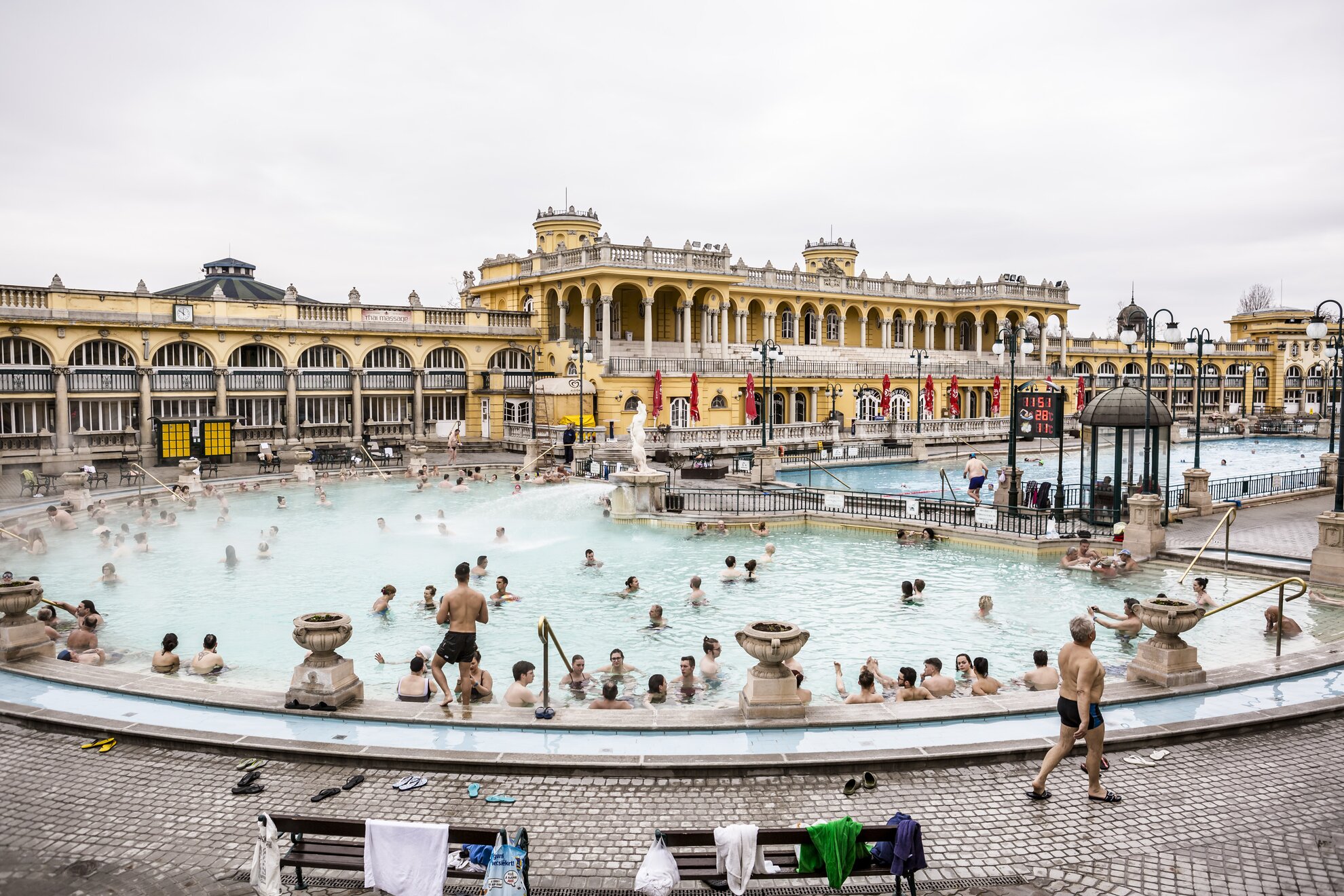Hungary is a thermal water empire, ranking as the fifth largest in the world, so a trip to Budapest wouldn't be complete without experiencing one of the city's magnificent baths. These structures are not only architecturally intriguing – some dating back to the 16th-century Ottoman occupation – but their water also has healing power. One of the city's most renowned bath complexes, Széchenyi Baths, is celebrating its 111th anniversary this June, adding an extra reason to visit its world-famous outdoor pools. While there, engage in a game of chess in the water, indulge in a beer bath, chill in the Palm House, or join the Grand Budapest Bath Party.
The story
While Buda has long been abundant in thermal baths, the Neo-Baroque Széchenyi Baths complex was the first of its kind on the Pest side. It's no surprise that it quickly became popular among the residents of Pest, who were delighted when it opened its gates in 1913. Initially, the baths were supplied by a single thermal spring, with 74,5 °C medical water rising from a depth of 970 metres. As the baths gained popularity, an expansion was needed, along with an increase in the water supply. Another well was drilled in 1938, where they found 77°C thermal water at a depth of 1,256 meters – solving both the thermal water supply and heating issues. See how city dwellers enjoyed this iconic spot back in the day:
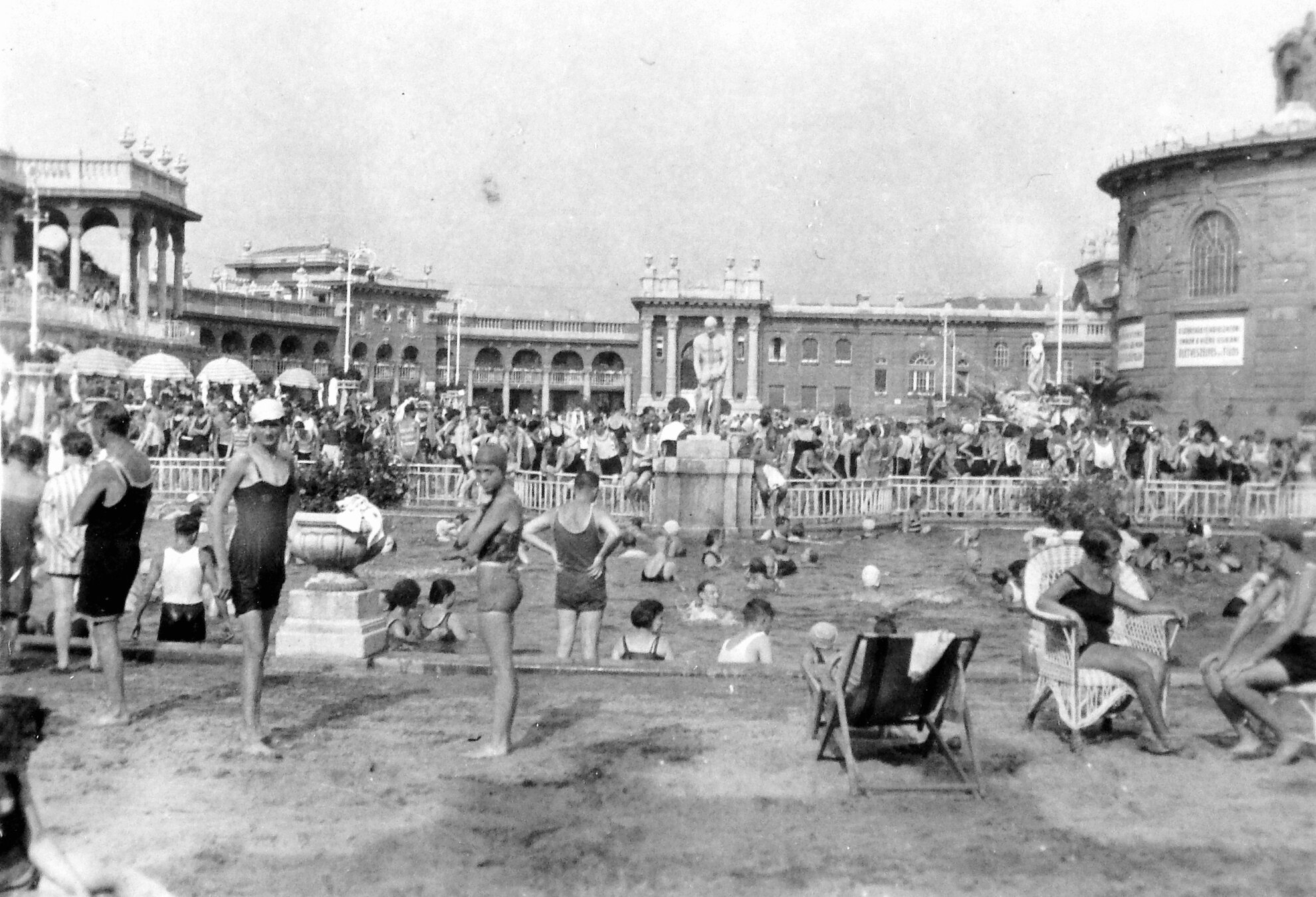
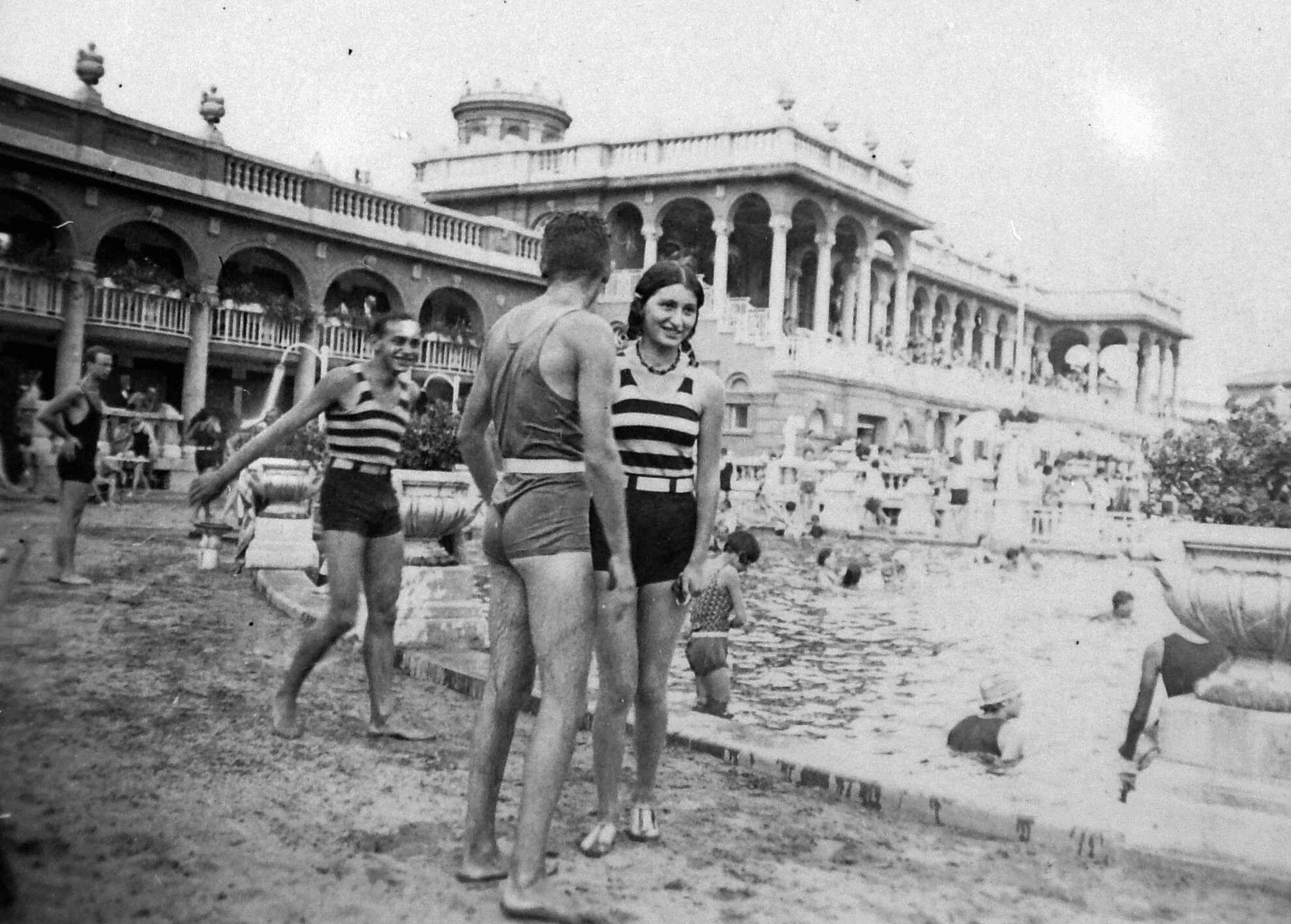
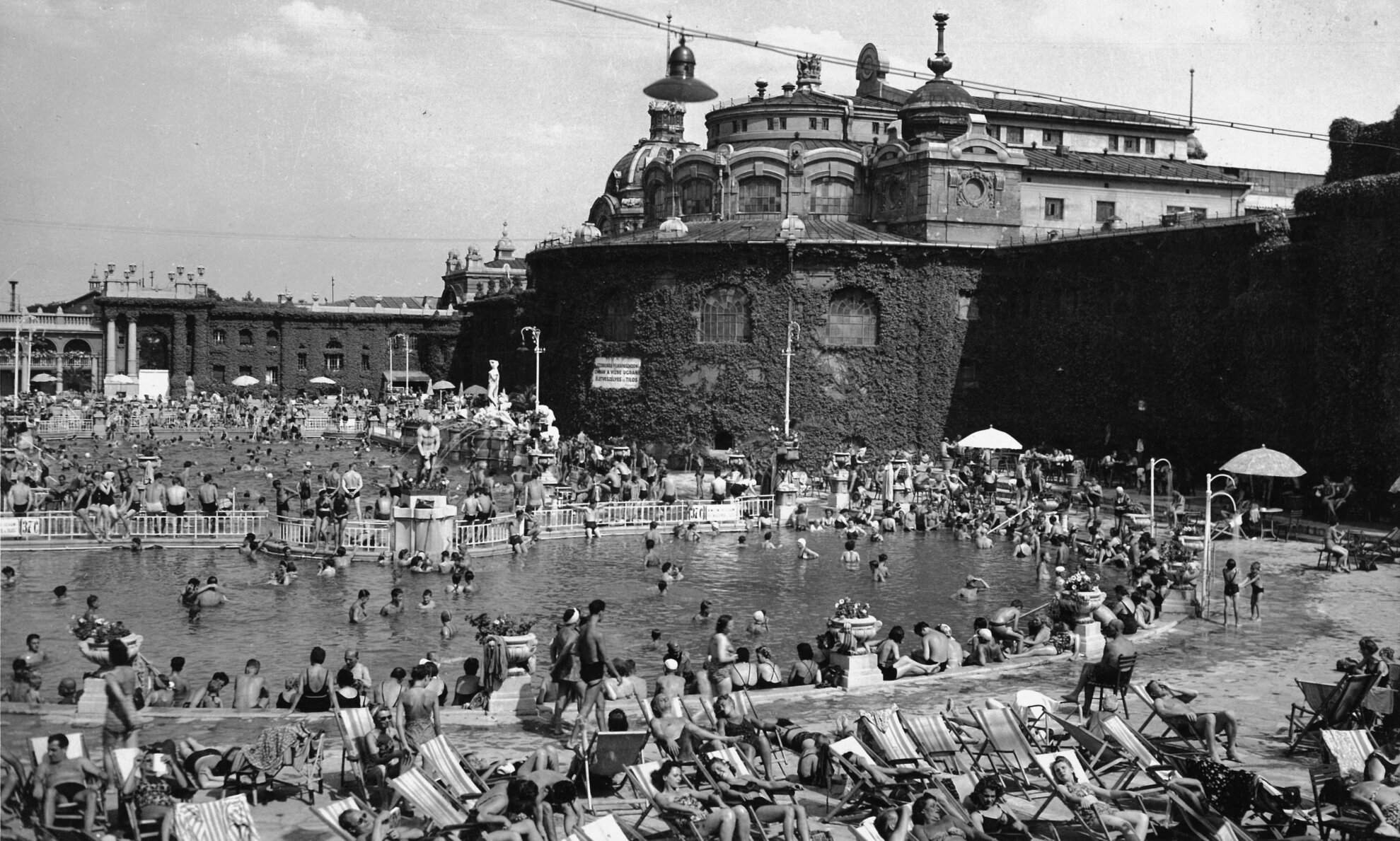

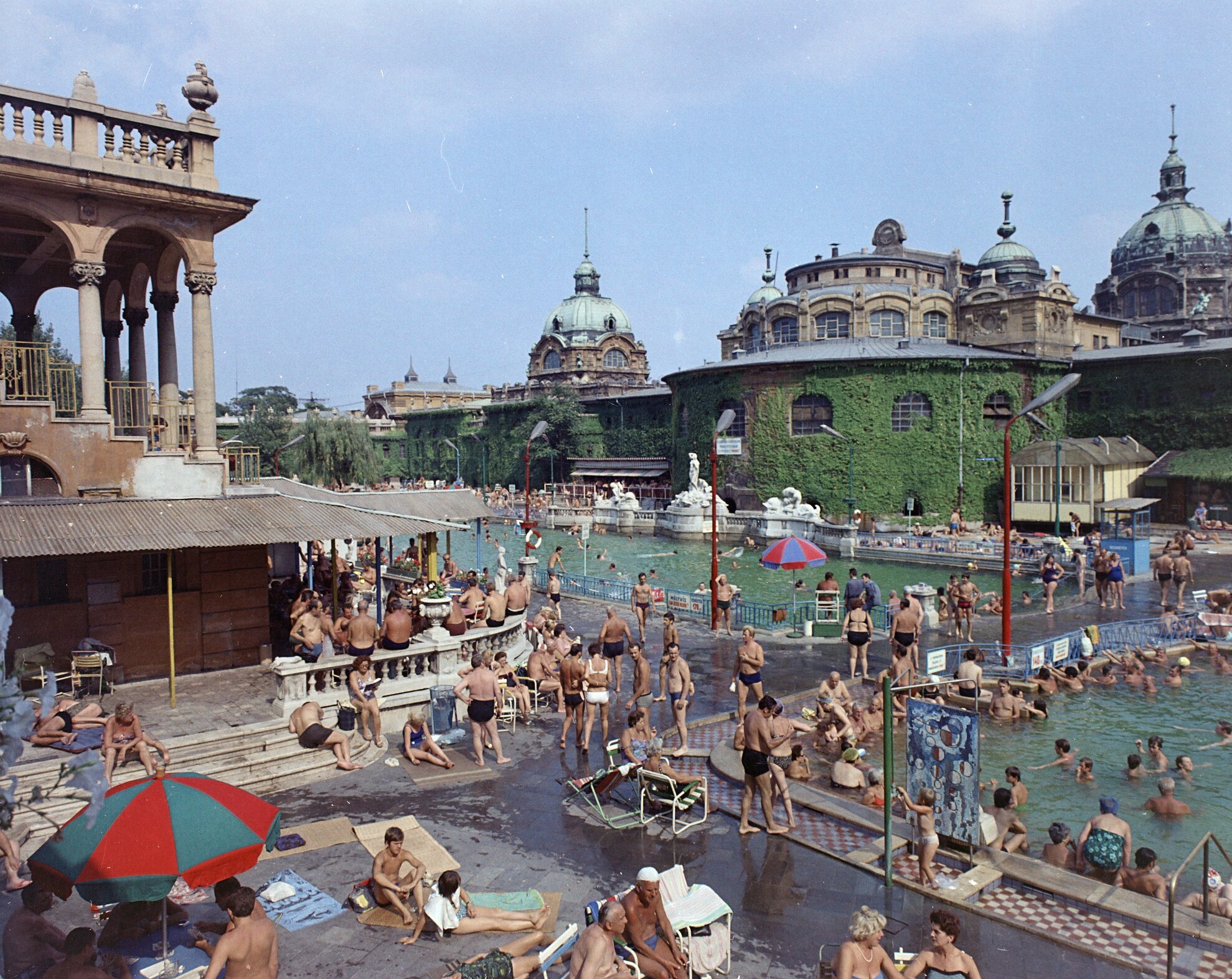
Széchenyi Baths today
Today, you can relax in 3 outdoor and 15 indoor pools, supplied by Saint Stephen Well, and 6 smaller, deep-drilled wells. The baths also feature saunas and steam rooms, and you can sign up for various medical treatments and massages. A quintessential image of Budapest is elderly locals playing chess in the water – a tradition you can try as well. You can channel your inner architecture enthusiast and marvel at the mesmerising details of the building: mosaics depicting the bathing culture and healing and a dome adorned with images created by Miksa Róth. You'll also find sirens and sea monsters on the columns, shell decorations, and an array of fish carved into the gargoyles. The tiles in the pools, the intricate corridor decorations, and the shell-shaped decorative vases were all crafted at the renowned Zsolnay factory in Pécs.
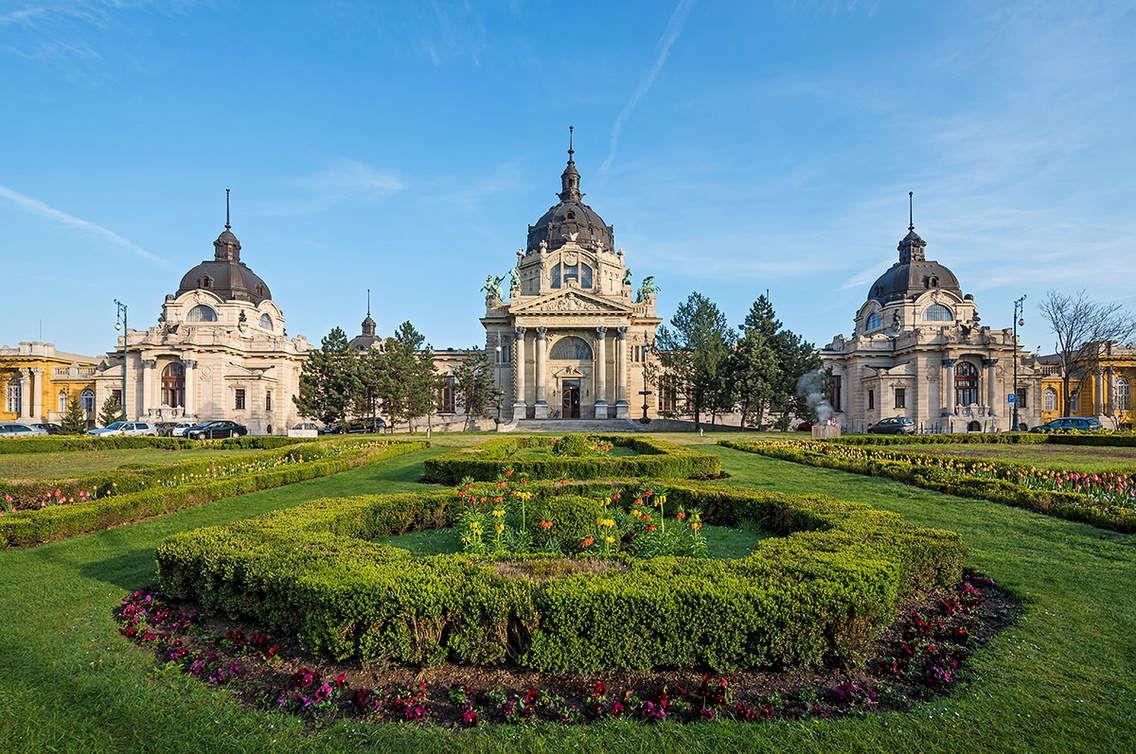


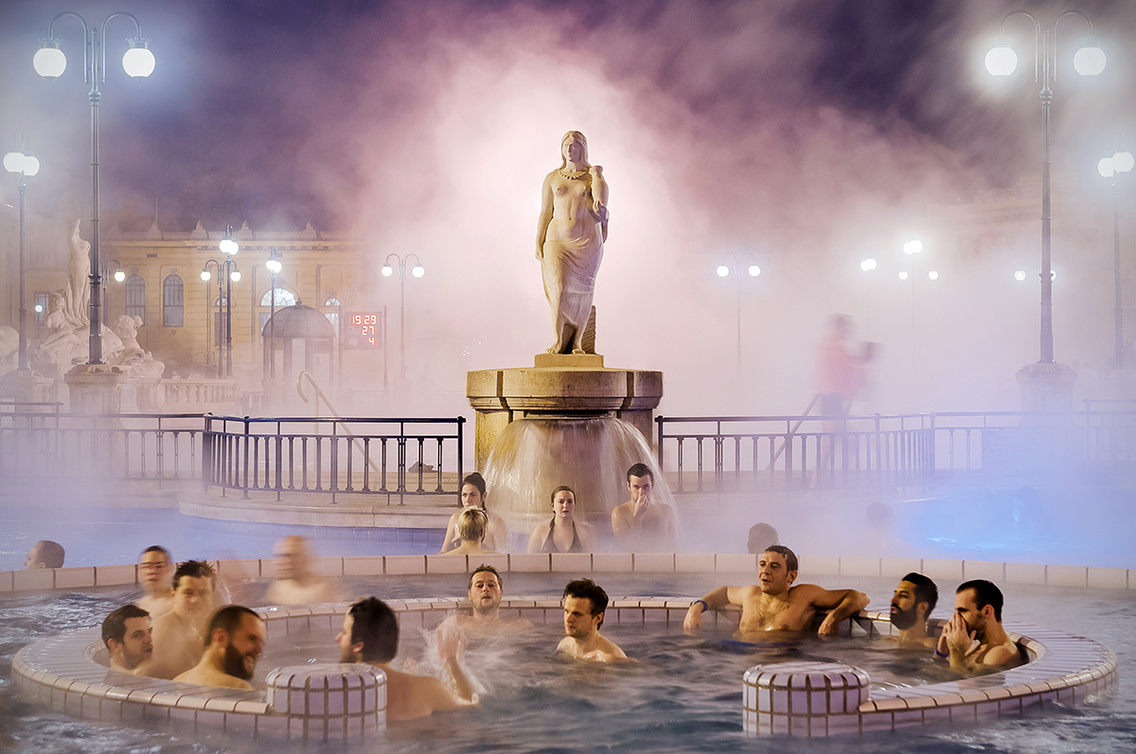
Visiting Széchenyi Baths always promises a memorable time, but it's especially atmospheric in winter when steam rises into the frosty air. Early summer mornings are also a treat, particularly on weekdays when you can snag a sunbed and enjoy the pools without the crowds. For those craving something a bit different from the usual thermal pools, it's worth trying the Palm House on the top floor of the building, where you can relax in a tropical atmosphere. If you're after a more adventurous afternoon, head to the Beer Spa, where you can not only sip on Czech beer but also soak in a beer-infused bath. And if dancing to upbeat tunes is your call, don't miss the outdoor pool party series.


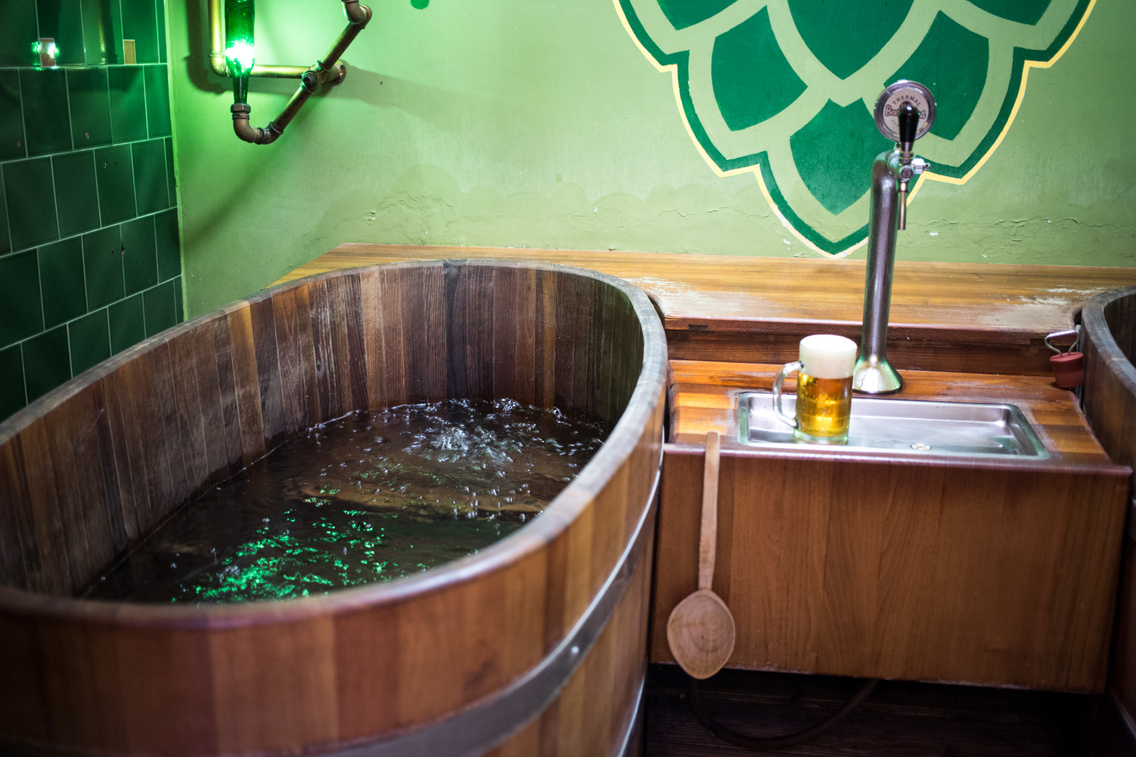
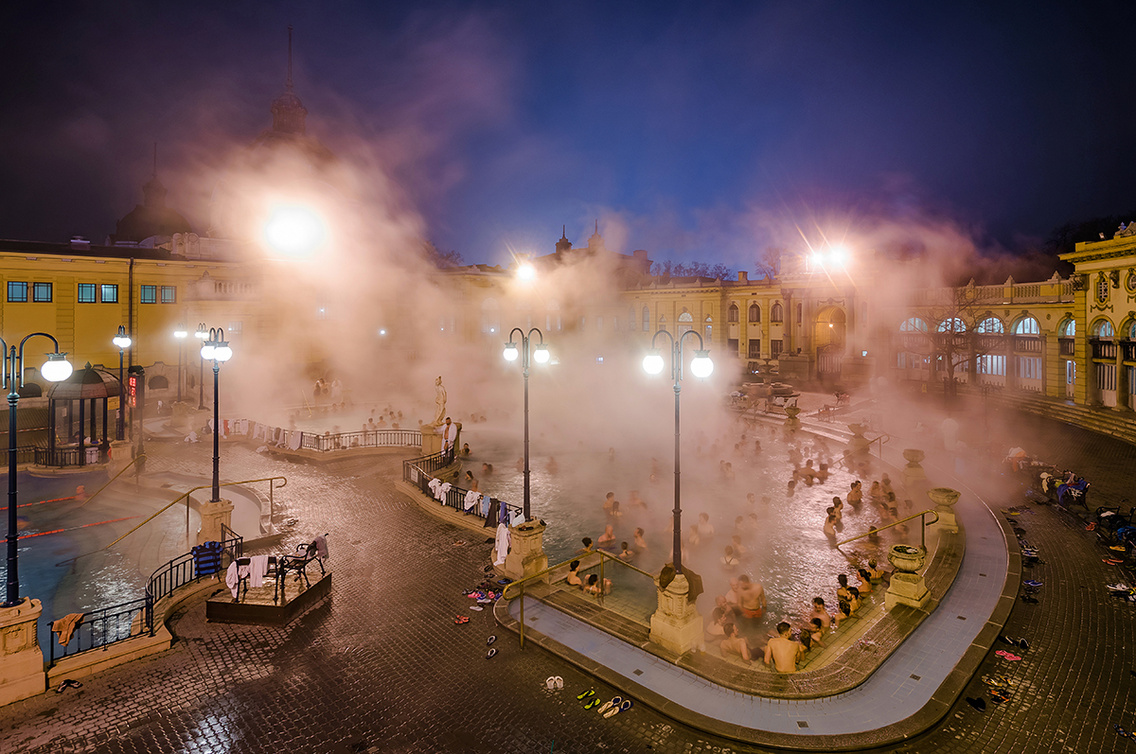
Széchenyi Baths is undoubtedly one of the most popular baths in Budapest, rivalled only by Gellért Baths, so be prepared for a crowd. But trust us, the queue will be worth it. You can reach the spa by the Millennium Underground, making it easily accessible for the many daily visitors heading towards the main entrance opposite the circus.

